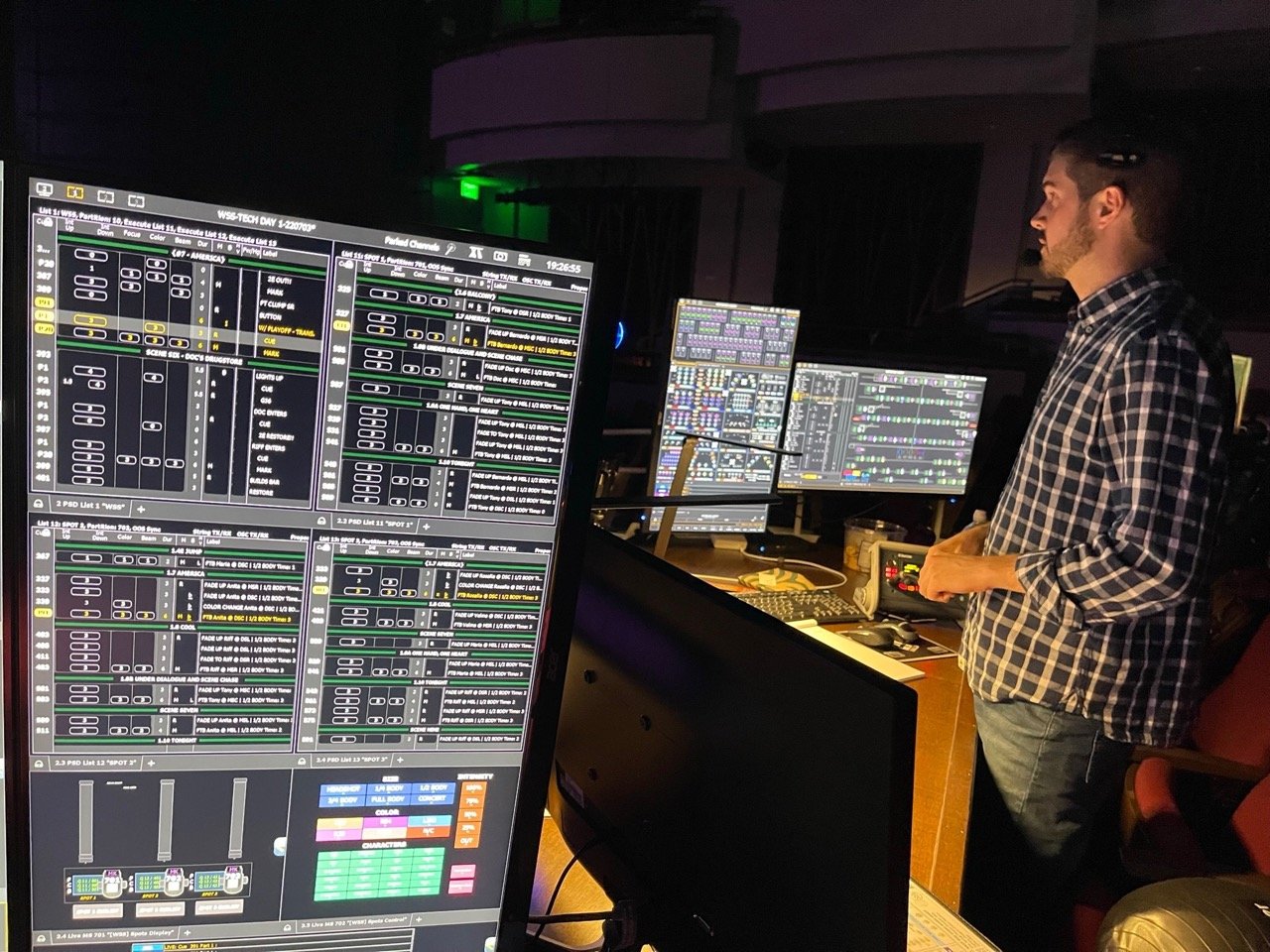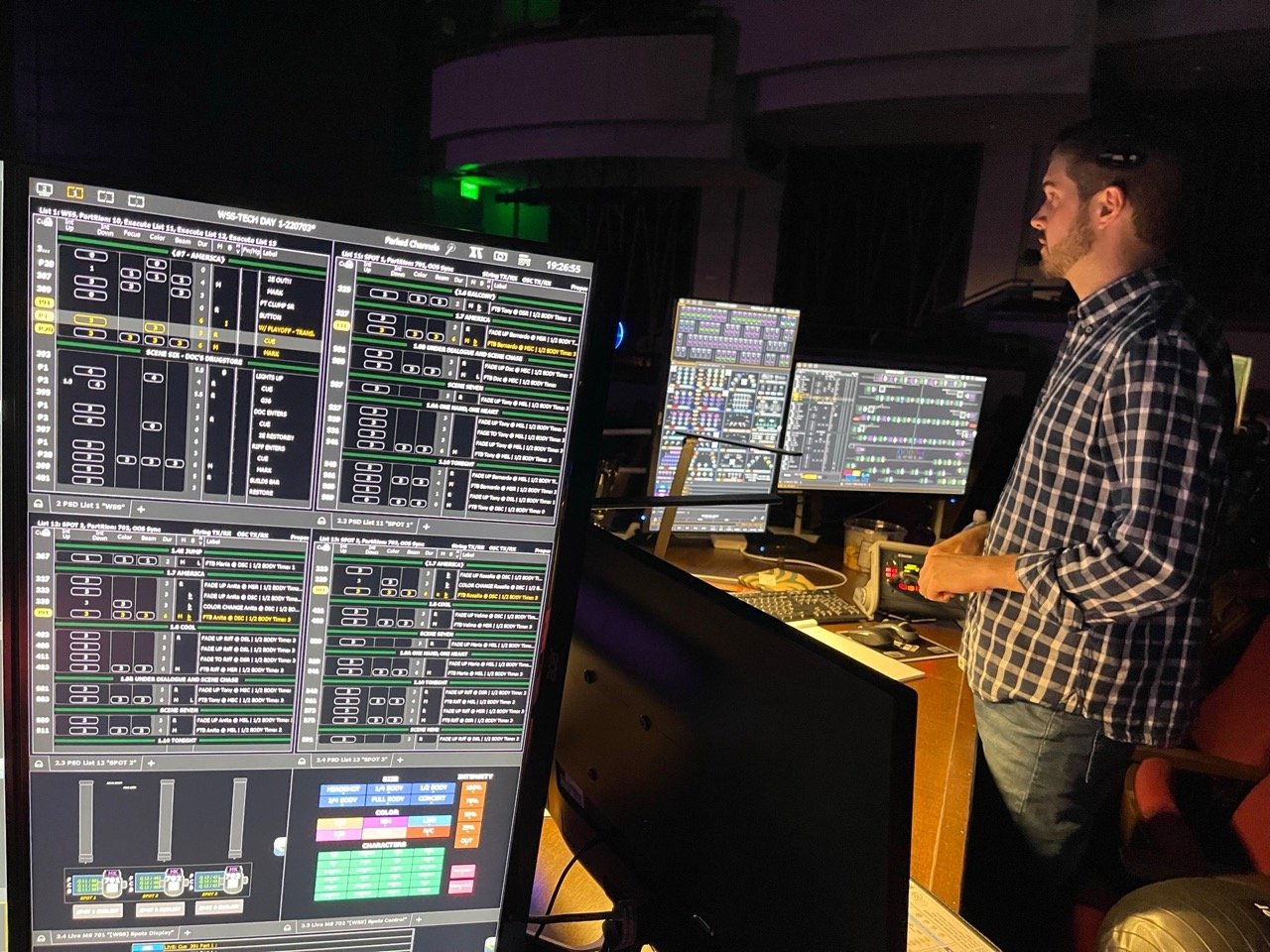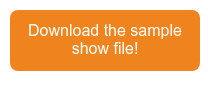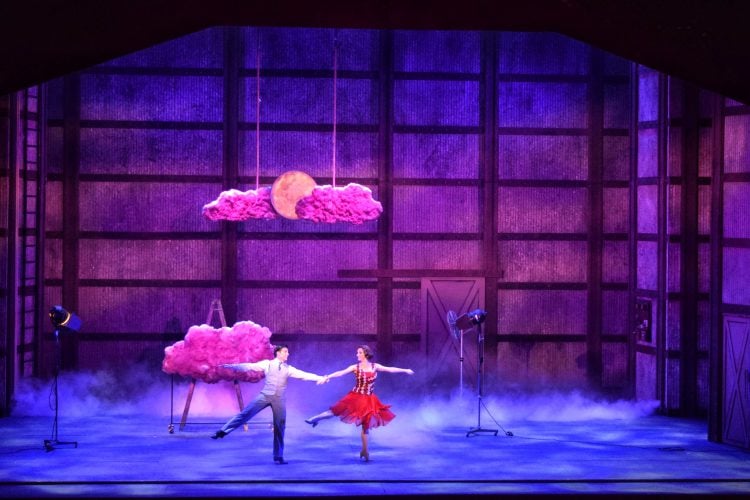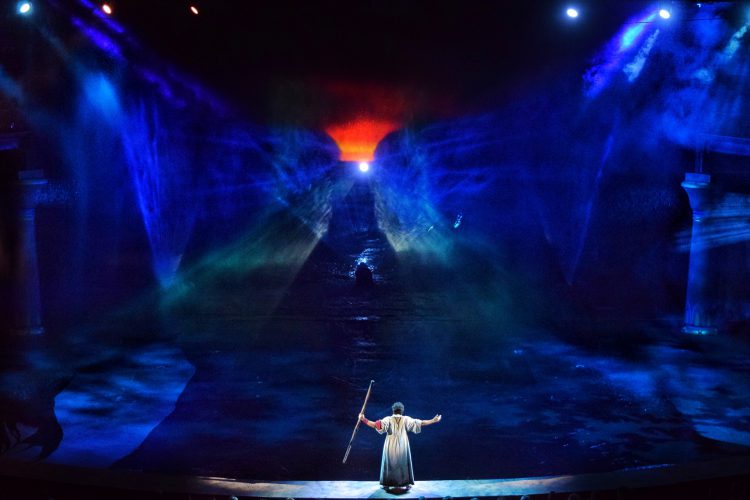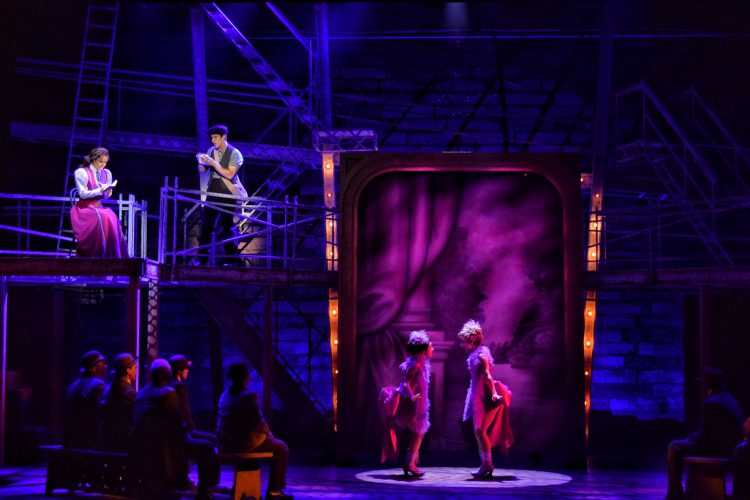Buckle up for a deep dive into how to control your followspots on an Eos console!
Hi, everyone! Guest Blogger and Lighting Designer Mike Wood here (website, Instagram). For the past few years, my team and I have been working extensively with followspots that are controlled through the lighting console. Today’s post is full of tips, tricks, and things we’ve learned after countless experiments with Eos consoles and followspots.
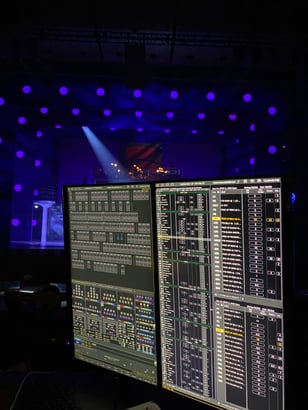 Why Control Your Spots?
Why Control Your Spots?
The idea of controlling your followspots from the console isn’t a new one. The siren song of being able to control every aspect of a followspot like any other moving light in your show is powerful. But like many concepts and techniques in theatrical design, there are many different levels and approaches when implementing such a technology.
At the most basic, a board-controlled followspot can be something as easy as a Source Four on a City Theatrical Yoke connected to a dimmer. It’s a simple concept with equally simple execution. One dimmer, one light, you’re set.
Some of you are probably already thinking “It’s really not that hard to manage the data for the single parameter, Mike – why the long blog post?” And you’re right – up to a point. With a simple one-parameter light like this, it sometimes makes sense to put it into the cue list just like any other light in your show. Record your intensities, call it a day.
But what if you start adding more parameters to the mix? What if you want to be able to control the color? You could add a scroller or Seachanger to your light, perhaps make it an LED, and now you have a much better looking followspot… but your data management is getting a little more complex. How do you store color? How do you handle frost vs. no frost?
Tracking all that information for a followspot in your main cue list like every other fixture is incredibly challenging. It also makes it hard to bop around and adjust other things, since now that single light is tied to the entire rest of your show, too.
And don’t forget the human element! If you take control of the dimmer fully away from your followspot operator, you take away any margin for error. That light is coming on if the operator is ready or not.
Balancing the needs (and benefits) of a human-operated followspot with the added benefits of console control requires some forethought and a whole lot more data management than you would think at first blush. Here are a bunch of great ways to leverage the power of an ETC Eos-family console to get the best of both worlds. Let’s dive in!
Lighting Designer Dalton Hamilton and the three followspot set up for a production of "West Side Story"
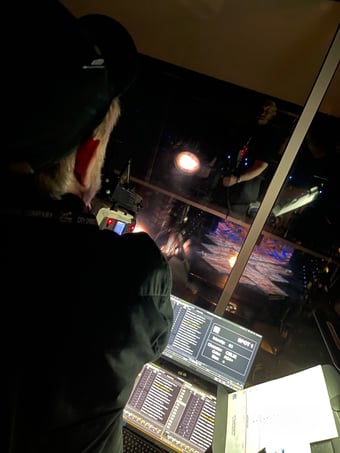 Moving Lights as Followspots
Moving Lights as Followspots
Many moving lights now have a “followspot” mode that disables pan/tilt and allows an operator to control the unit manually.
We use mostly the Robe BMFL series of lights nowadays with either the LightMaster or Robospot controllers. The Robospot controller allows for the operator to be in a remote location while controlling the followspot using a camera and pan/tilt handle control, while the LightMaster is a small panel and handle set that mounts directly to the side or rear of a BMFL fixture.
In my experience, the LightMasters are a little more friendly for theatrical use because they still allow the operator to have a physical connection with the light. Many experienced followspot operators don’t love the Robospot control system if the cues are full of tight shots and theatrical nuance. They work great for full-body open white rock ‘n’ roll, but not so much for that ¼-body, soft-edge, far upstage-center pickup in the middle of an emotional ballad.
From a rental standpoint, the LightMasters are also just… cheaper.
The LightMaster controller connects to the light via USB and when connected, automatically disables the Pan/Tilt on the fixture and puts the light into its Followspot Mode. From there, the operator can map certain parameters and features to the various buttons, dials, and faders on the LightMaster. We typically map only two things to the actual controllers – intensity and iris. Everything else about the light is controlled from the lighting console.
We set the maximum intensity on a cue-by-cue basis, and the operator has a manual fader to take their own pickups. This fixes the issue we first discussed in this post while still allowing for artistic programming.
Bigger Cue Lists or More Cue Lists?
We’ve experimented with a few different ways of programming organization over the years to get to where we are now. We started with the concept that I talked about before – recording the lights right into the main cue list. From there, we experimented with two cue lists. Finally, we landed on multiple lists, one per spot. Here are some charts that explain why we chose what we did – and why you may want to choose a different path for your show.
SINGLE CUE LIST (All followspot info in main cue list)
| PROS | CONS |
|
|
TWO CUE LISTS (All followspot info separate from main cue list)
| PROS | CONS |
|
|
MULTIPLE CUE LISTS (Individual cue lists for each followspot, separate from main cue list)
| PROS | CONS |
|
|
We ultimately decided that the best way was to put each spot into its own cue list, and then trigger those cue lists using the main lighting cue list.
Getting the Console Ready
After you’ve decided on your cue list format, there are a number of important Eos features to set up to make this kind of control work reliably and well.
Partitioned Control
The most important part of this setup is partitioned control in Eos. If you’re not familiar with partitions, you can read more about them here in the Eos manuals. Essentially, a partition is a way to separate programming control of a channel from other channels and limit that channel to certain users or cue lists.
Okay, but why is this important to do? Well, setting up partitions ensures that only data that is supposed to be put into a cue list is put into that specific cue list, and nowhere else. It ensures that when you hit update, you don’t have to double check that you’re updating the right things into the right places and you haven’t accidentally recorded spot 3 into your main cue list. While programming, it makes sure that the ALD (or whoever is programming the followspots) can’t accidentally change the color of some other random light while no one was looking.
In a show file with three followspots, we have six partitions:
- All Channels
- All Channels Except Followspots
- Only Followspots
- Spot 1
- Spot 2
- Spot 3
We number these based on spot. In the image example the partition number matches the spot cue list number with a 7 prefix because the spot channel numbers were in the 700s.
Then, those partitions are assigned as follows:
- Lighting Programmer – Non-Spots
- Followspot Programmer (ALD) – Spots Only
- Main Cue List – Non-Spots
- Spot 1 Cue List – Spot 1 Partition
- Spot 2 Cue List – Spot 2 Partition
- Spot 3 Cue List – Spot 3 Partition
(The board operator/run of show gets assigned to the “everything” partition once we get into dress rehearsal)
Out of Sequence Sync
Out Of Sequence Sync is one of the best features on Eos Family consoles. Too many people don’t know about it! (Read more about Out of Sequence Sync in the Eos Manual.) But the short of it is that OOS Sync is a way to quickly link cue lists to each other so that one triggers another one.
In our show file, we use OOS Sync to link the three followspot lists back to the main list. This is done in the Blind Cue List Index Window, or Tab 16.
List one is set to Execute Spot Lists 11, 12, and 13. OOS Sync is turned on for all lists.
This allows us to hit GO on list 1, and if there’s a cue with the same number in lists 11, 12, and 13, they will fire as well. If we GoToCue 125, lists 11, 12, and 13 will jump with us. Most importantly, they will jump to the closest cue number in those lists going down. So if we are in LX125, but the last Spot 1 cue is 119, OOS will ensure that going to cue 125 will trigger cue 119 in the Spot 1 list.
Numbering the Cues
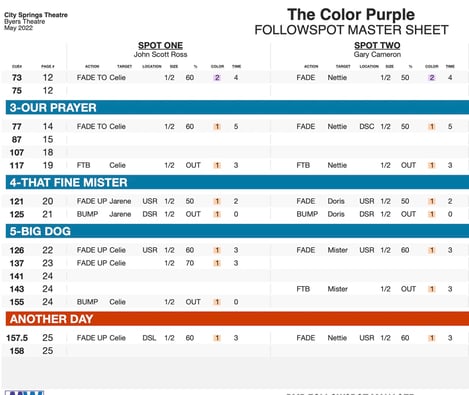 Another important part of this setup is that your followspot cue numbers should match your lighting cue numbers. That means it’s possible that spot 2 might have their first cue as number 26, but that’s okay. It’s certainly possible that you could just number the spot cues in numeric order, but that requires you to manually add executes to your main list for every spot cue that you need to trigger. You would also have to maintain those executes and delete/change them as needed throughout the tech process. Trust me, it’s a pain and you don’t want to do it.
Another important part of this setup is that your followspot cue numbers should match your lighting cue numbers. That means it’s possible that spot 2 might have their first cue as number 26, but that’s okay. It’s certainly possible that you could just number the spot cues in numeric order, but that requires you to manually add executes to your main list for every spot cue that you need to trigger. You would also have to maintain those executes and delete/change them as needed throughout the tech process. Trust me, it’s a pain and you don’t want to do it.
While it might make your eyes twitch a little bit to have large gaps in your spot cue numbers, it’s a quick adjustment that will save you so much time.
Now you’re thinking “Alright, sold! But… how?”
If you number your cues the same as your main lighting cue numbers, then syncing the whole thing is only a few button clicks away: Turn on OOS Sync, link up your lists, and you’re good to GO!
Displaying the Data
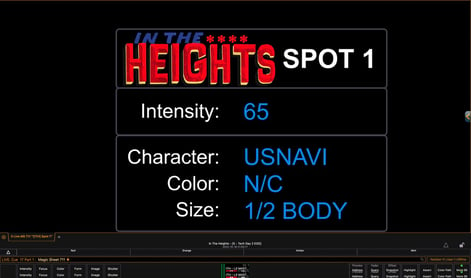 At its most simple, you can display the spot cue lists using PSDs that are linked specifically to the spot list that you want to display. This is one of the many advantages of splitting up the control into individual lists. With Nomad dongles being so affordable, it’s becoming easier and easier to give each operator their own live cue sheet.
At its most simple, you can display the spot cue lists using PSDs that are linked specifically to the spot list that you want to display. This is one of the many advantages of splitting up the control into individual lists. With Nomad dongles being so affordable, it’s becoming easier and easier to give each operator their own live cue sheet.
Magic sheets take this to the next level, but there are a few things that you’ve gotta look out for. As you’ve probably seen on my Instagram, we display the color, target, and size data for the operator on these magic sheets. But where does that data come from? After all, the operator is controlling the pan, tilt, and iris – not the console.
We accomplish this by using “dummy” data in focus and beam palettes programmed into the cues. Each character gets a focus palette with their name, and each size gets a beam palette. It’s important to note that you have to actually record hard values into these pallets – but since the RoboSpot controller overrides the motors, the data doesn’t actually impact the light.
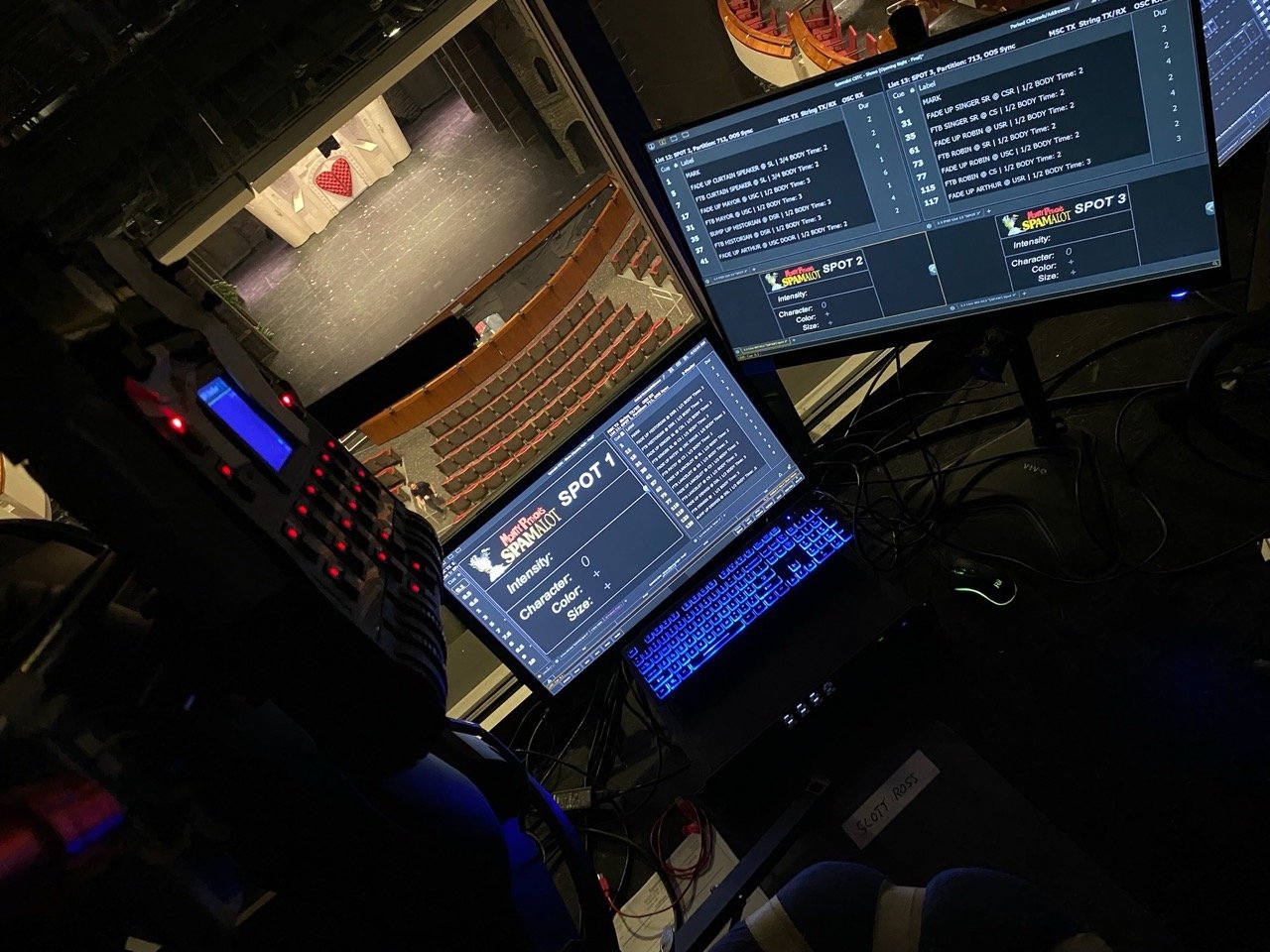
The Spot One operator has their cues on the left monitor and the other spot operator cues on the right monitor. (They called the others.)
Auto-Programming the Spots
One of the challenges we discovered using board-controlled spots is that it meant having to do a lot of duplicate data entry: once into the spot paperwork and then again into the console. I set out to figure out a way to automate this!
That led me to expand some of my existing FileMaker solutions to essentially handle everything related to this. It does all the setup, it creates the lists, patches the lights, and makes the cues themselves.
As many of you may know, I have a whole video series on how to create your own FileMaker-based lighting paperwork solution. I don’t currently have anything specific to followspot cues there, but many of the lessons in the series can be used to help figure out how to make this yourself. One day I hope to add followspots to the series.
In the meantime, check out this Instagram post for lots of screenshots as well as a great Q&A in the comments.
Example Eos Show File
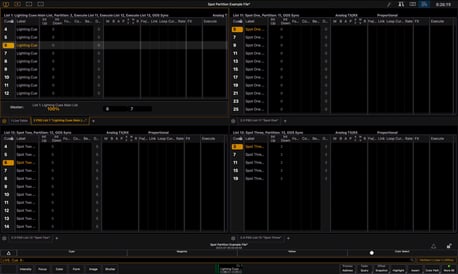 I know, there’s a LOT of information in this blog post. It can be overwhelming.
I know, there’s a LOT of information in this blog post. It can be overwhelming.
To help you out, I took some time to put together a basic show file outlining everything that I talked about in this post. In it, you have a set of generic channels as well as three followspots. There are partitions set up as well as four cue lists properly partitioned for control and playback.
Map the main list to your main fader and hit go/back a bunch to see how the various lists follow along. Try a few go-to-cues in List 1 out of order and watch what happens.
Then, when you’re ready, try this out in your own shows! If you do, tell us how it went in the comments!


